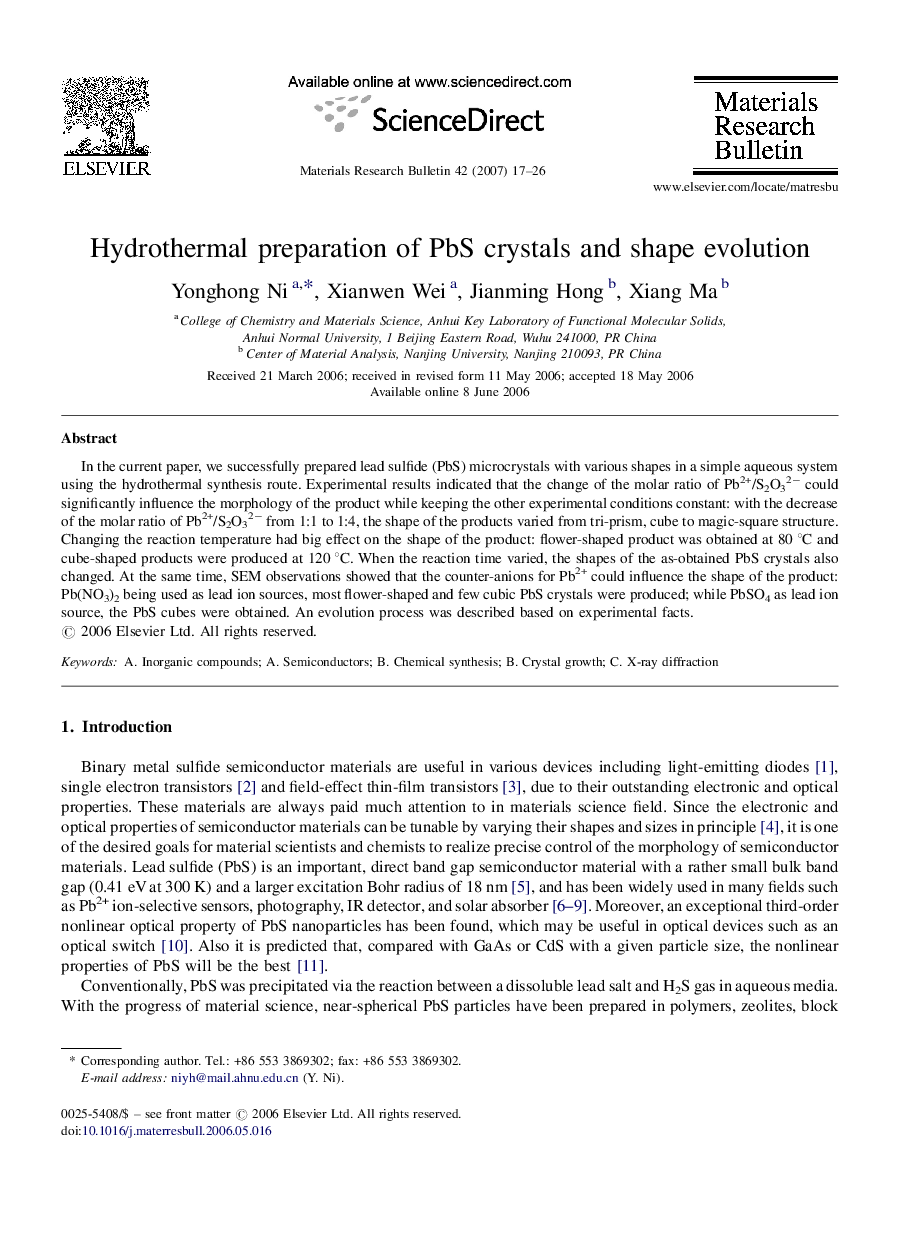| Article ID | Journal | Published Year | Pages | File Type |
|---|---|---|---|---|
| 1492632 | Materials Research Bulletin | 2007 | 10 Pages |
Abstract
In the current paper, we successfully prepared lead sulfide (PbS) microcrystals with various shapes in a simple aqueous system using the hydrothermal synthesis route. Experimental results indicated that the change of the molar ratio of Pb2+/S2O32â could significantly influence the morphology of the product while keeping the other experimental conditions constant: with the decrease of the molar ratio of Pb2+/S2O32â from 1:1 to 1:4, the shape of the products varied from tri-prism, cube to magic-square structure. Changing the reaction temperature had big effect on the shape of the product: flower-shaped product was obtained at 80 °C and cube-shaped products were produced at 120 °C. When the reaction time varied, the shapes of the as-obtained PbS crystals also changed. At the same time, SEM observations showed that the counter-anions for Pb2+ could influence the shape of the product: Pb(NO3)2 being used as lead ion sources, most flower-shaped and few cubic PbS crystals were produced; while PbSO4 as lead ion source, the PbS cubes were obtained. An evolution process was described based on experimental facts.
Keywords
Related Topics
Physical Sciences and Engineering
Materials Science
Ceramics and Composites
Authors
Yonghong Ni, Xianwen Wei, Jianming Hong, Xiang Ma,
